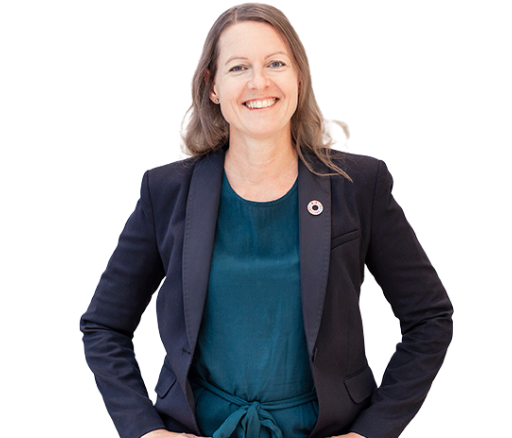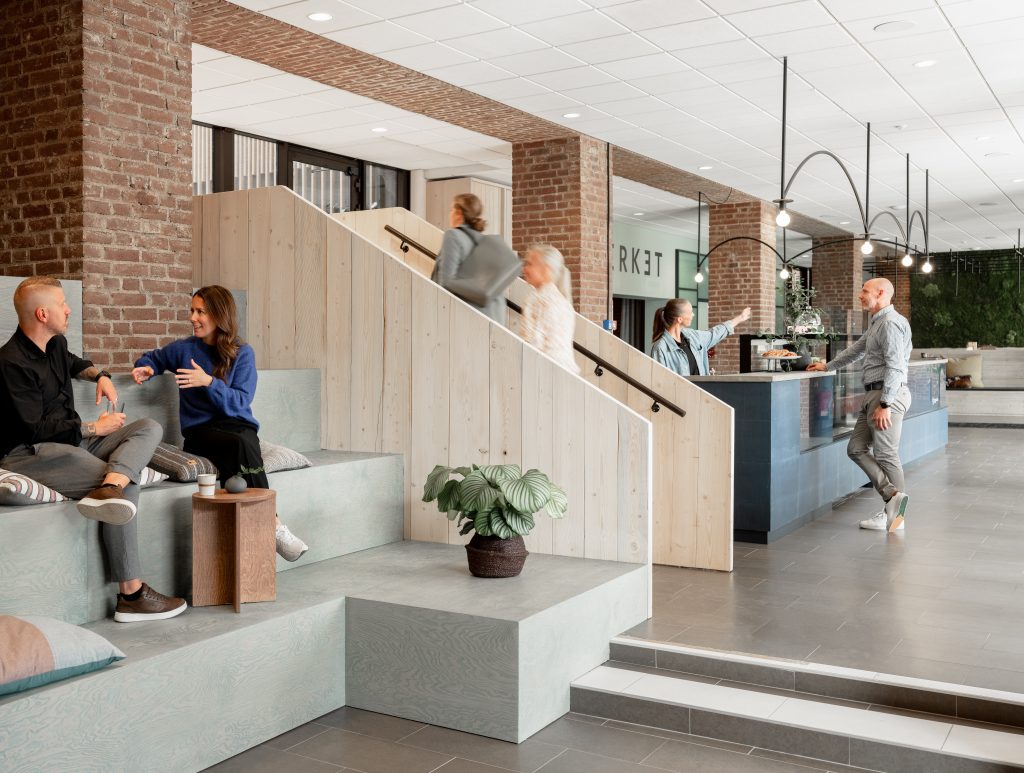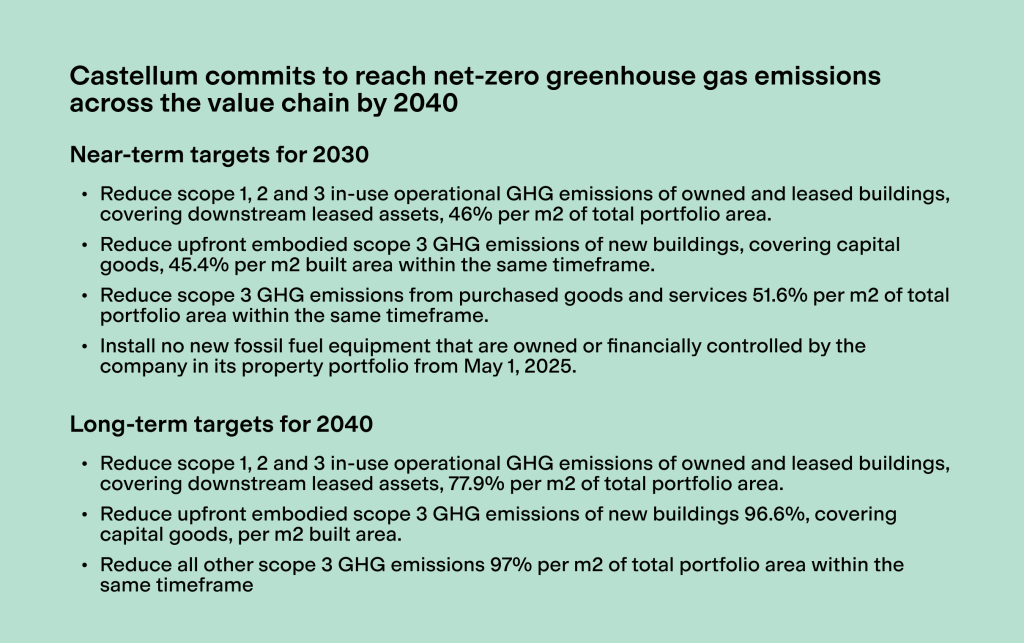Castellum leads the way: First in Europe to set science-based targets under new buildings criteria

In this story, you’ll learn how a strong internal drive, scientific rigor, and the right support helped Castellum turn new criteria into a strategic advantage.
Sustainability at scale
At Castellum, sustainability isn’t a side project—it’s a central part of how the business grows and operates. With a portfolio focused on office and logistics properties across Sweden’s growth cities, the company plays a defining role in the Nordic built environment.
“We have a responsibility to lead,” says Maria Perzon, Group Sustainability Manager. “We’re not just responding to pressure from legislation and investors. We’re proactively shaping how the real estate sector can align a future to keep the climate within the 1.5°C limit.”
That leadership is backed by a proven track record. By 2018, Castellum had already reduced its scope 1 and 2 emissions by 78% from 2007 levels. It became the first Nordic real estate company with an approved SBTi target that included Scope 3. However, the real challenge was scope 3 itself—the complex, high-impact emissions from construction, procurement, and downstream operations.
Science-based clarity in a shifting landscape
In 2024, SBTi introduced sector guidance for the construction and real estate sector. The new buildings framework brought sharper emissions boundaries, required separate reporting of operational, construction, and procurement emissions, and shifted targets to be set per square meter. The update also placed greater emphasis on scope 3 reporting to ensure alignment with the Paris Agreement.

“We revised our targets as soon as the new criteria were available. We wanted to set the benchmark—not chase it.”
Maria Perzon – Group Sustainability Manager.
Image source: Jesper Orrbeck
For many, this shift created uncertainty. For Castellum, it was the signal to act.
“We didn’t wait,” says Maria. “We revised our targets as soon as the new criteria were available. We wanted to set the benchmark—not chase it.”
The process required collecting emissions data from development projects, building a robust 2023 baseline year, and coordinating closely across departments—from procurement and finance to executive leadership. The result? A clearer, science-aligned roadmap that supports both short- and long-term business goals.
A sustainability partner that understands complexity
To support the transition, Castellum turned to Position Green as a partner for methodological guidance, structured analysis tools, and strategic alignment.
“The regulatory landscape is evolving rapidly, and you need partners who can help you see around corners,” says Maria. “Position Green gave us the tools and support to translate high-level ambition into actionable targets. They helped make a complex job manageable.”
Position Green’s Advisory services streamlined Castellum’s work and ensured the targets aligned with scientifically defined emissions pathways, while also helping interpret the complex language of the standards and formulate accurate responses.

From approval to advantage
With SBTi approval now secured under the Buildings Sector Criteria, Castellum is already reaping the benefits.
- Improved risk management through stronger emissions oversight
- Sharper focus on high-impact activities, avoiding sub-optimisation and maximizing climate gain
- Easier access to green financing with verified, science-based targets
- Stronger investor trust and ESG credibility
- Strengthened brand by a clearer leadership position in the climate transition
What’s next: Transition in action
Looking ahead, Castellum is developing a climate transition plan that will guide how the business meets its 2030 goals and reaches net-zero emissions by 2040. This involves reviewing and ensuring clear alignment of emissions targets with investment decisions, tightening project and procurement criteria, and integrating operational activities with the overall roadmap.

Maria’s advice for peers? “Start now. Get familiar with the new SBTi framework—it’s not optional, it’s the future standard. And don’t treat this as a box-ticking exercise. The earlier you act, the better positioned you are to turn climate strategy into real business value.”
Explore how your company can align with science-based goals and turn climate action into business advantage
Position Green’s ESG software and advisory services are built to support forward-thinking companies like Castellum on their sustainability journey.
Explore Position GreenStay up to date with the latest ESG-trends with our newsletter
About Castellum
Castellum’s previous climate target was built on the best available methods at the time. But with the Science Based Targets initiative raising the bar, all goals set before 2020 now need to be recalculated. The updated target uses a new base year (2023) and a stricter methodology—shifting the timeline, but not the ambition. The purpose remains the same: driving real climate impact, now measured with greater precision and in line with global best practice.


